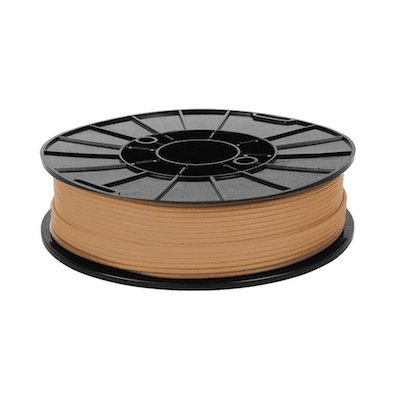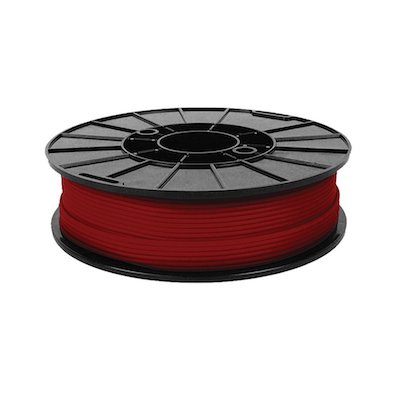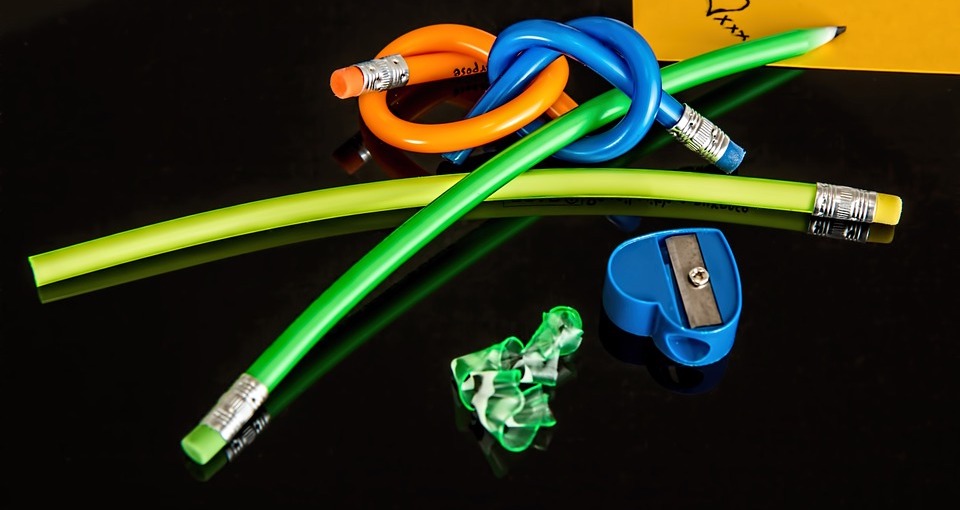Flexible Filaments: Properties, How to Use Them, and Best Brands
We have talked about composite filaments such as carbon fiber filaments and stainless steel filaments, and how they result in prints that have a unique rigidity and heft. That is all fine and dandy, but sometimes, you would want to make a print that is on the opposite end of the flexibility spectrum. In times like these, flexible filaments will be your go-to materials. In this article, we discuss what flexible filaments are, the challenges in using them, and the best tips for you to get good quality prints.
What are flexible filaments?
If your goal is to make a highly flexible print that acts similar to rubber, then flexible filaments are the way to go. Real rubber is a thermoset – meaning that it is a material that cannot be processed again and again using heat. Flexible filaments are made from a variety of different thermoplastic materials such as TPE (Thermoplastic Elastomer) or TPU (Thermoplastic Polyurethane). Materials used for flexible filaments are usually made from a blend of plastic and rubber to come up with a filament that combines both the elasticity and flexibility of rubber and the versatility of plastic.
Flexible filaments fill a special niche in the field of 3D printing, as there may be times when you want to print an object that has to be flexible. Typical examples of these include shoe soles, watch straps, ice cube trays, or an O-ring replacement for your kitchen pipes. With flexible filaments, you can print these objects yourself instead of having to buy them.
What are the challenges in using flexible filaments?
The flexibility of flexible filaments is apparent not only on the printed product but also on the filament itself. This characteristic introduces a few issues in the 3D printing process, making it quite a challenging material to work with.
Flexible filament tends to deform in the extruder assembly, especially when the printing temperature and speed are not at the optimal settings. For this reason, it is recommended to use Direct Extruders instead of Bowder Extruders when working with flexible filaments. In a Direct Extruder, there is a shorter distance between the drive gear and the hot end, leaving little room for the filament to deform. It does seem that newer Bowden Extruders have been designed to work better with flexible filaments, but we are yet to test their effectivity.
Not being able to hit the optimal printing settings when using flexible filaments may also result in a messy print that is full of strings and blobs. This is a sign of inconsistent flow on the extruder, probably caused by pressure buid-up which in turn is caused by improper temperature, speed, or retraction settings.
How do you work with flexible filaments?
Working with flexible filaments can be quite tricky, but a little patience goes a long way. Due to the aforementioned tendency of flexible filaments to deform inside the extruder assembly, we highly recommend using a Direct Extruder. For best results, we recommend consulting with your 3D printer manufacturer to check if set-up is designed for printing using flexible filaments. You can help ensure a consistent feed rate to your extruder by mounting your filament spool, or orienting the spool so that it feeds downward to the extruder.
Temperature is a particularly critical parameter when printing with flexible filaments. A temperature setting that is too high will lead to excessive stringing, while a temperature setting that is too low will result in poor layer adhesion and an overall weaker print. The printing temperature for a flexible filament will vary depending on the material of the filament. For instance, the optimal temperature for a TPE filament is 220 °C, while a TPU filament will print better at 250 °C.
Another key parameter when printing with flexible filaments is the printing speed. When printing with flexible filaments, you will need to set the printing speed at a deliberately low setting. We have been able to get good results with a speed of 30mm/s, but is not unheard of to hear some users printing at 10mm/s or even as low as 5 mm/s for highly detailed prints. Printing at low speeds puts less pressure on the extruder, reducing the chances of the filament deforming inside the assembly.
A heated bed is not necessary when using a flexible filament. Should you be using one, a setting of 45 to 60 °C should work well. First layer adhesion is often an issue that comes up when printing with flexible filaments. Kapton tape or standard blue painters’ tape work best to ensure adhesion of flexible prints, whether you are using a heated bed or not.
Flexible material is very soft when hot, so it is generally recommended to cool your print as quickly as possible. For this reason, we recommend using a cooling fan at maximum setting. Of course, it follows that you should not be putting an enclosure on the printing bed.
Similar to nylon, flexible filaments are very hygroscopic, meaning they easily absorb moisture from the environment. They need to be stored in airtight containers with an appropriate dessicant. Before use, we recommend drying your flexible filament in an oven set to 90 to 100 °C for around 6 hours. Keep in mind that having moisture in your filament will result in prints with voids where water bubbles have evaporated.
What are the best brands of flexible filaments?
Flexible filaments have been widely used in the past few years, and manufacturers have responded with a variety of flexible filament products made from different materials.

The NinjaFlex range of flexible filaments from NinjaTek is probably one of the most popular flexible filament products today. This product line features both TPE and TPU variants, and the filaments are available in a wide range of colors such as Sapphire Blue and Midnight. The NinjaFlex products claim to be the strongest and most flexible filaments in the market, and user feedback has been generally favorable. The NinjaFlex filaments are sold in 0.5 kg and 0.75 kg spools and are available in both 1.75mm and 3.00mm diameters. If you’re looking for a reliable flexible filament and you would like to be a little more creative, then the NinjaFlex filaments are perfect for you.

NinjaTek also has a special line of flexible filaments called Cheetah. The Cheetah filaments were designed to be printed at faster speeds compared to other flexible filaments. The products in this line are made from TPU and are also available in a wide range of colors. The Cheetah filaments are sold in 0.5 kg and 0.75 kg spools and are available in both 1.75mm and 3.00mm diameters. These filaments were made with optimal user experience in mind, which makes them perfect if you’re still learning how to print with flexible filaments.

The Flexible TPU filament from SAINSMART is a slightly more affordable alternative. It is not as popular as the previous products, but product reviews and feedback have also been generally positive. The TPU filaments are available in a wide selection of colors, allowing room for your creativity to shine through. These filaments are available in 1.75mm diameter and are sold in 0.8 kg and 0.25 kg spools. If you are still starting out with flexible filaments, then the small spool size should be just right for you.

AMOLEN has a set of gorgeous looking TPU filaments that are available in nice colors such as transparent yellow, marble, and bronze. They are available in 1.75 mm diameter and are sold in pairs, with each spool weighing 0.5 kg.

The Flexfill product line is the entry of Fillamentum into the flexible filament market and claims to provide a printing experience with faster printing speeds, no warping, and good retractability. The Flexfill filaments are available in a small range of colors, and are sold in 1 kg, 0.5kg, and very small 50 g spools. They are available in both 1.75 mm and 2.85 mm diameters.

The FlexSolid filament product from MadeSolid is unique in that it promises a print that is both flexible and very resilient. This is a great filament if you’re looking to print an object that needs to be able to handle rough conditions. The FlexSolid filaments are available in clear and solid black variants, and are sold in 1 lb spools of either 1.75mm or 2.85 mm diameter.
The final word
Printing with flexible filaments takes a little more effort and patience compared to the standard plastic filaments, but it allows you to make prints that have a unique combination of flexibility and durability. The ability to make custom prints using a flexible material has virtually endless possibilities in household or industrial settings.
Printing parameters for flexible filaments seem to vary with different products so we recommend consulting the manufacturer and playing around with the settings of your printer. One thing is for sure: it is going to be a long, slow process but the results are worth it. If you have ever aspired to make your own phone case (or a new sole for your shoes!), then we suggest getting your own flexible filament and discovering the possibilities for yourself.






